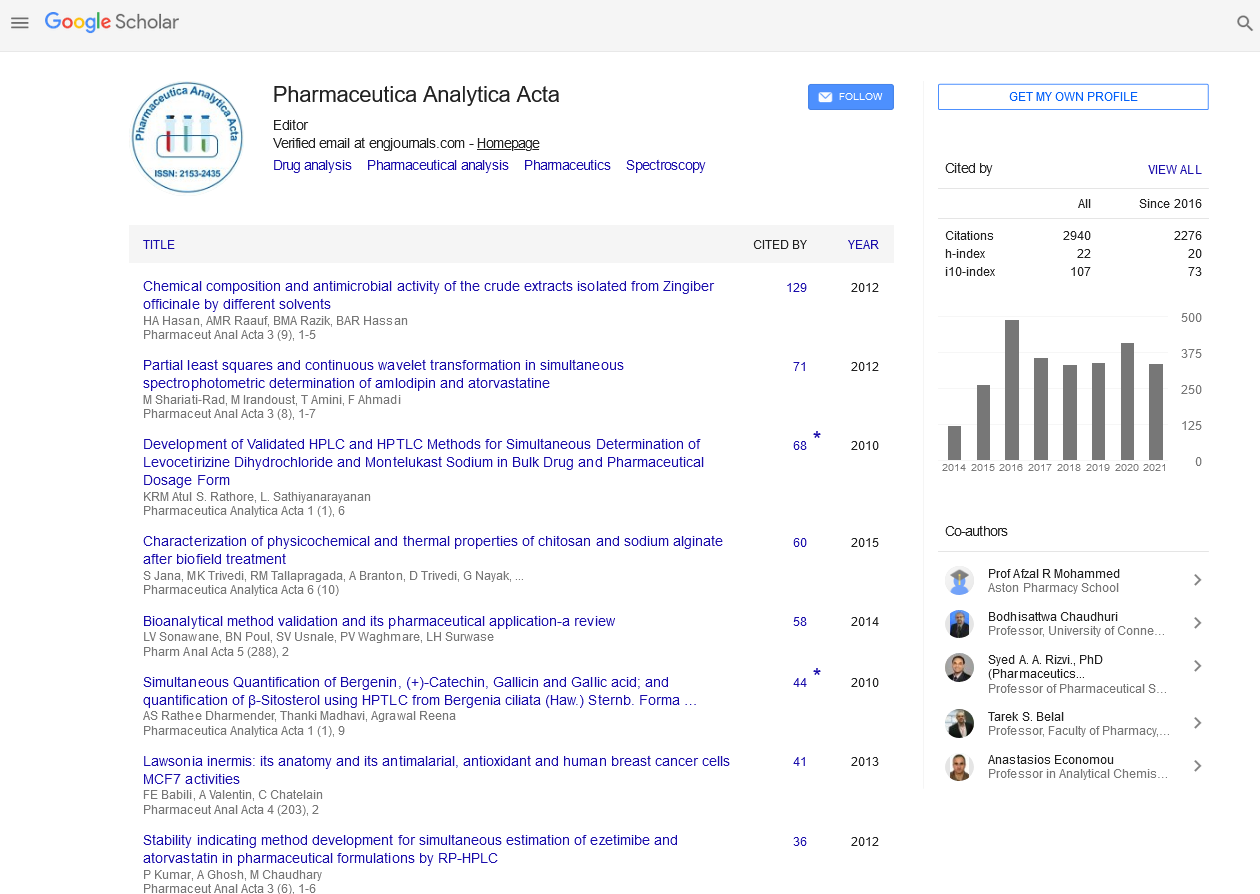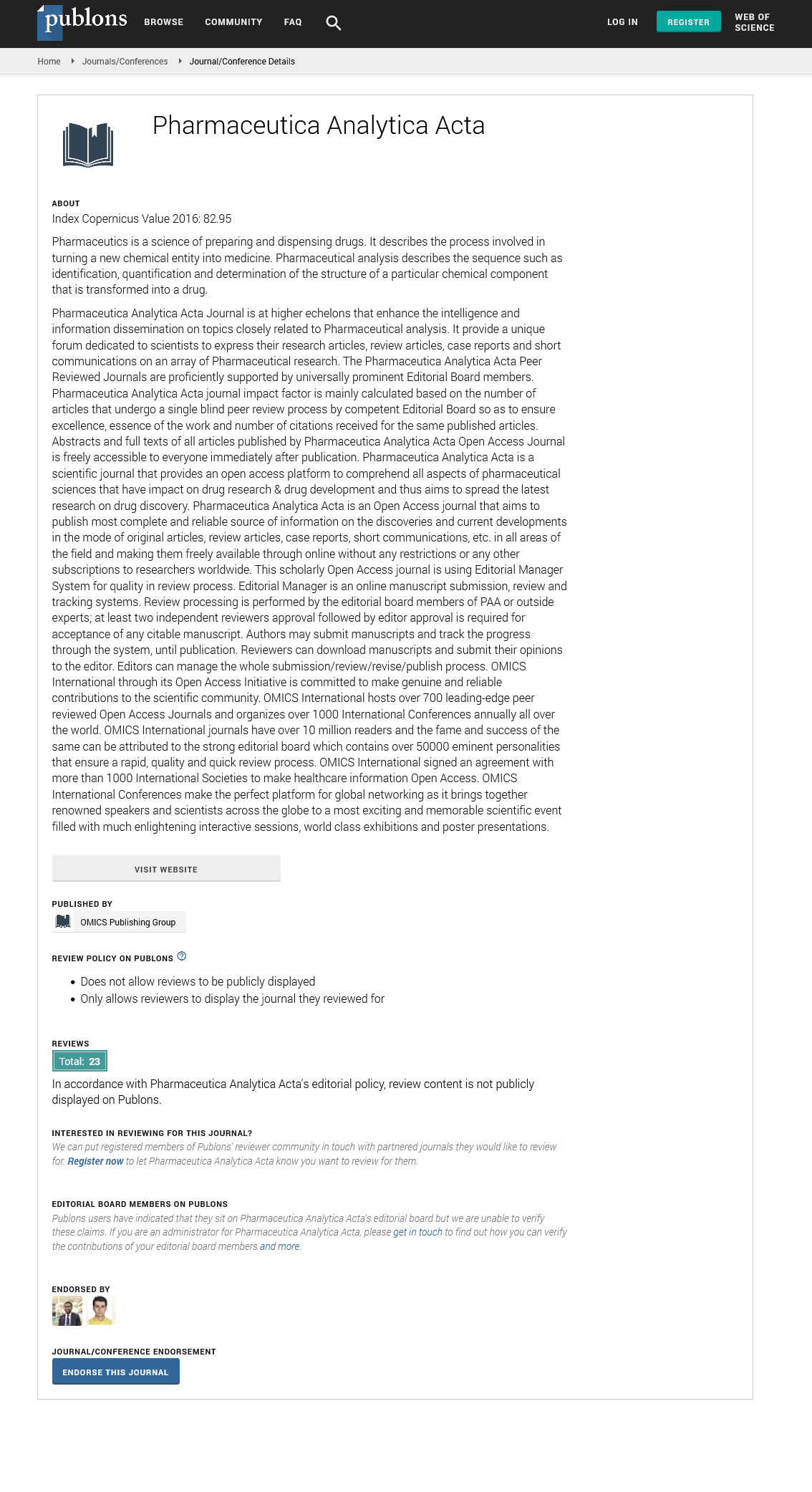Indexed In
- Open J Gate
- Genamics JournalSeek
- Academic Keys
- JournalTOCs
- The Global Impact Factor (GIF)
- China National Knowledge Infrastructure (CNKI)
- Ulrich's Periodicals Directory
- RefSeek
- Hamdard University
- EBSCO A-Z
- OCLC- WorldCat
- Publons
- Geneva Foundation for Medical Education and Research
- Euro Pub
- Google Scholar
Useful Links
Share This Page
Journal Flyer

Open Access Journals
- Agri and Aquaculture
- Biochemistry
- Bioinformatics & Systems Biology
- Business & Management
- Chemistry
- Clinical Sciences
- Engineering
- Food & Nutrition
- General Science
- Genetics & Molecular Biology
- Immunology & Microbiology
- Medical Sciences
- Neuroscience & Psychology
- Nursing & Health Care
- Pharmaceutical Sciences
Short Communication - (2025) Volume 16, Issue 3
Advancements in Oncology: A Comprehensive Examination of Antineoplastic Drug Development
Marc Damelin*Received: 22-Feb-2024, Manuscript No. PAA-24-24994; Editor assigned: 26-Feb-2024, Pre QC No. PAA-24-24994 (PQ); Reviewed: 11-Mar-2024, QC No. PAA-24-24994; Revised: 04-Jun-2025, Manuscript No. PAA-24-24994 (R); Published: 11-Jun-2025, DOI: 10.35248/2153-2435.25.16.819
Description
In the ever-evolving landscape of oncology, the development and application of antineoplastic drugs represent a formidable force against the persistent adversary that is cancer. These pharmacological warriors, designed to combat and control the growth of malignant cells, have transformed the development of cancer treatment. This opinion article explores the multifaceted process of antineoplastic drugs, exploring into their mechanisms, challenges, and the evolving area of cancer therapeutics.
Antineoplastic drugs, commonly known as chemotherapy, constitute a diverse class of medications designed to disrupt the uncontrolled growth of cancer cells. Unlike specific therapies or immunotherapies, which focus on specific molecular pathways or control the immune system, antineoplastic drugs operate through various mechanisms to inhibit cell division, induce cell death, or interfere with the complex processes of DNA replication and repair.
Chemotherapy agents can be classified into different categories based on their mode of action, such as alkylating agents, antimetabolites, anthracyclines, topoisomerase inhibitors, and mitotic inhibitors. Each category targets specific aspects of the cell cycle or DNA synthesis, collectively forming a formidable arsenal against the heterogeneity of cancer cells.
The history of antineoplastic drug development is a testament to the persistent activity of more effective and specific cancer treatments. The initial era of chemotherapy, marked by the discovery of nitrogen mustards and folic acid antagonists, laid the foundation for subsequent advancements. Over the decades, researchers have fine-tuned existing agents and discovered novel compounds, leading to the development of more selective and less toxic drugs.
Combination chemotherapy, wherein multiple drugs with distinct mechanisms of action are used simultaneously, emerged as an innovative strategy to enhance treatment efficacy and mitigate resistance. The approach aims to exploit the vulnerabilities of cancer cells at different stages of their growth cycle, increasing the chances of successful treatment outcomes.
Despite their efficacy, antineoplastic drugs are not without challenges and side effects. The non-specific nature of chemotherapy often results in collateral damage to healthy cells, leading to a range of side effects such as nausea, fatigue, hair loss, and myelosuppression. These adverse effects can significantly impact the quality of life for cancer patients undergoing treatment.
Moreover, the development of resistance poses a formidable challenge in the long-term effectiveness of antineoplastic drugs. Cancer cells can adapt and evolve, rendering once-effective treatments ineffective. This necessitates ongoing research to understand the mechanisms of resistance and devise strategies to overcome or circumvent this formidable obstacle.
In recent years, the area of cancer treatment has witnessed a change of opinion with the emergence of specific therapies and immunotherapies. Unlike traditional chemotherapy, targeted therapies focus on specific molecules or pathways that are important for cancer cell survival and proliferation. This precision approach aims to maximize therapeutic effects while minimizing damage to healthy tissues.
Immunotherapies, on the other hand, harness the power of the immune system to recognize and eliminate cancer cells. Checkpoint inhibitors, adoptive cell therapies, and cancer vaccines are among the innovative approaches that have shown remarkable success in certain cancer types. While not replacing chemotherapy, these modalities complement traditional treatments and expand the armamentarium against cancer.
The concept of personalized medicine has gained prominence in cancer treatment, aiming to customize therapeutic approaches based on the unique characteristics of each patient's cancer. Molecular profiling and genetic testing enable clinicians to identify specific mutations or alterations driving the growth of cancer cells. This information guides the selection of targeted therapies or immunotherapies that are most likely to be effective for a particular patient.
The integration of personalized medicine into oncology marks a significant departure from the multipurpose approach of traditional chemotherapy. By understanding the molecular intricacies of individual cancers, clinicians can optimize treatment strategies, potentially enhancing efficacy and minimizing side effects.
As we look toward the future, the trajectory of antineoplastic drug development is poised for further innovation. The advent of artificial intelligence, big data analytics, and advances in genomics are revolutionizing our understanding of cancer biology. These tools hold immense potential in identifying novel drug targets, predicting treatment responses, and resolving the complexities of cancer at unprecedented levels of granularity.
Nanotechnology represents another frontier in drug delivery, offering the potential of targeted and controlled release of therapeutic agents. Nanoparticle-based drug delivery systems aim to enhance the selectivity of antineoplastic drugs, minimizing off-target effects and improving overall treatment outcomes.
Conclusion
In conclusion, antineoplastic drugs have been instrumental in reshaping the area of cancer treatment, providing hope and extended survival to countless individuals diagnosed with malignancies. The evolution from the early days of non-specific cytotoxic agents to the era of targeted therapies and immunotherapies reflects the relentless activity of more effective and less toxic treatment modalities.
While challenges persist, including side effects and the development of resistance, ongoing research and technological advancements continue to propel the field forward. The integration of personalized medicine and the exploration of innovative delivery systems emphasize a commitment to refining and optimizing cancer care. As we navigate the frontiers of antineoplastic drug development, it is essential to recognize the collaborative efforts of researchers, clinicians, and patients in advancing the field. Through continued innovation and a commitment to precision medicine, the journey against cancer advances, offering new hope and possibilities for those affected by this formidable disease.Citation: Marc Damelin (2025) Advancements in Oncology: A Comprehensive Examination of Antineoplastic Drug Development. Pharm Anal Acta. 16:819.
Copyright: © 2025 Damelin M. This is an open-access article distributed under the terms of the Creative Commons Attribution License, which permits unrestricted use, distribution, and reproduction in any medium, provided the original author and source are credited.


